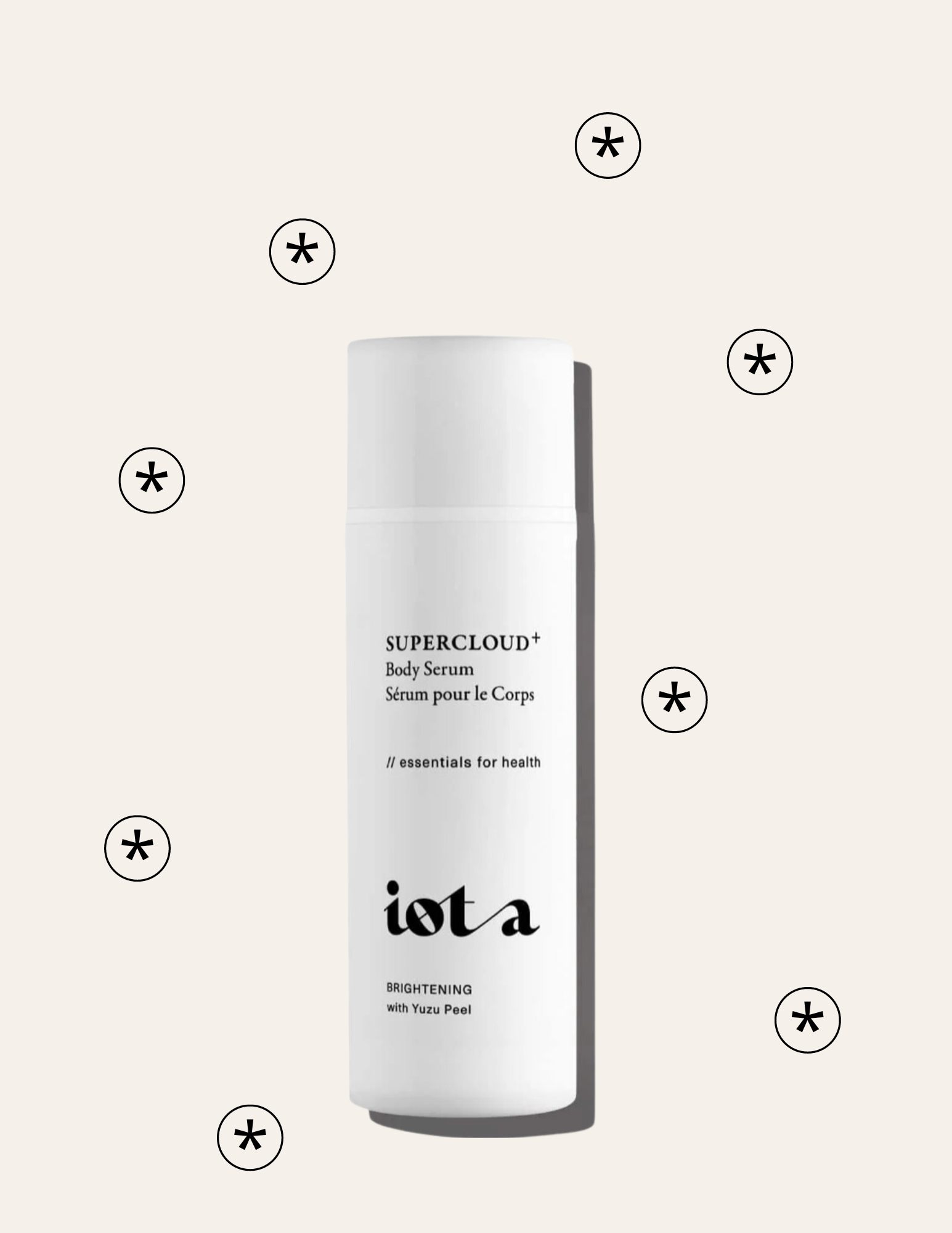revue THE NEWSLETTER
Become the most interesting woman in the room.
Designed to bring more depth, intention, and luxury into your week.

How to Heal Your Trauma Somatically
by: REVUE Editorial
“Trauma shows up in the body because the natural stress response cycle is interrupted. This is what causes trauma.” – Ali Kates
We have all found ourselves hitting our heads against a wall. Stuck within the logic, the psychological explanation, the loop of talking and talking and talking about it.
We are enlightened – having massive breakthroughs of our past selves that have shaped the current identity we wear and operate in. We have met our inner child, our limiting beliefs, the shortcomings of our parents, the reality of the situations that happened to us. We have done the work around that large and frightful thing our society has now come to a reckoning with. We have opened up the Pandora’s box of our psyche.
We sit here with an understanding and an acknowledgement and a self-awareness. A poignant, emotional, conscious awareness of that one thing.
So why do we still feel held captive by our trauma?
In the past few years, the word TRAUMA has been blasted across social media posts, bestselling
books, and podcast conversations alike. And while it might feel like we as a collective are coming online to how past trauma effects the current status of our lives, there is still so much beyond the surface that we have yet to pay attention to. Becoming aware of, understanding, and speaking aloud our trauma is our first step.
Most of us do not venture to the second step: the somatic step.
We sat down with Ali Kates, a Certified Trauma Recovery Coach and Somatic Experience Practitioner dedicated to helping others navigate trauma recovery and personal growth. She emphasizes that trauma lives in the body and must be addressed somatically.
So for those who have exhausted therapy and are still feeling a density, a heaviness, and fog within their bodies and daily lives, this dedicated conversation will illuminate a different way we get to approach our healing.
The healing our bodies – and therefore our souls – have been waiting for.
REVUE EDITORIAL: In the most simplistic and precise of ways, can you define what trauma is?
ALI KATES: Trauma occurs when an event happens too much, too fast, or too soon for our nervous systems to handle, making it difficult to cope with the experience.
R: How does trauma show up in our bodies and how do you specifically work with healing/processing trauma within your clients?
AK: Great question! Trauma shows up in the body because the natural stress response cycle is interrupted. This is what causes trauma. An example of this in nature is when a dog gets scared and a ridge of hair shows up on its back. After the dog realizes there is no longer a threat, it will naturally complete the stress response cycle by shaking and discharging the physiological (aka body) response to the perceived threat. Humans do not do this; instead, we go into overthinking and try to create safety by overthinking. When this natural stress response does not get completed like it does in animals, that emotional charge is stored in the body and can manifest as autoimmune diseases, fibromyalgia, IBS, etc. The work that I do with clients helps them move that emotional charge through their bodies and create a greater capacity for joy and empowerment in their lives. Depending on the client, I pull from my toolbox, using practices like Somatic Experiencing™, subconscious reprogramming, and hands-on work.
R: Where does therapy miss the mark when it comes to trauma?
AK: This is so important to discuss because we often believe that therapy will solve everything, and while it is an incredible tool, it has its limitations. If you have been through trauma, it is stored in the body, not the brain. So, therapy may miss the mark because, during trauma, your prefrontal cortex—your thinking brain—is offline. Therapy primarily works with your thinking brain. This is why, if you have experienced trauma, it is crucial to find a practitioner you trust to help you create more capacity in your nervous system rather than keeping you in a physiological loop. You have to feel to heal.
R: Can you explain a few trauma responses that we should look out for as a clue that there is something deeper happening within our physical and emotional bodies?
AK: Yes! There are many ways these types of responses can manifest, but I’ll provide some examples that might help. On an elementary level, there are four types of trauma responses: Fight, Flight, Freeze, and Fawn (or some people say “appease”).

Fight is as it sounds: this response involves wanting to fight either physically or verbally. An example can be as intense as a physical altercation or as subtle as constant passive-aggressive remarks toward your significant other.
Flight is when you want to physically leave the situation. This could mean getting up and leaving the room where the event is happening or shutting down cognitively and floating away (also known as dissociation).


Freeze is when you either feel physically unable to leave the room or dissociate from what’s happening. An example is being in an uncomfortable situation where someone is speaking about something that activates your nervous system, leading to clouded vision, floating away, and becoming numb. Okay here is where it gets interesting, when people have a trauma response they usually have two responses that are intertwined. You might initially experience a freeze response to something that is activating you, and then, as you move through the freeze response, a fight response might emerge if that was what was needed in the traumatic moment.
Fawn, or appease, is when you people-please your way through a situation. An example of this could be that someone says something like; “lets go here and get coffee at xyz” and you actually hate that coffee shop, but you are too scared to voice your opinion because of the perceived fall out that might happen. This is more of a developmental trauma example, but still a good one that shows what fawn mode can look like.

Remember, that these responses that show up in our bodies are a piece of a larger puzzle to what has happened in our lives.
R: In what ways does not addressing or processing our trauma show up in our lives?
AK: How much time do we have? But seriously, trauma affects every part of our lives, from relationships to physical symptoms, and even our internal dialogue. In romantic relationships, trauma can make you feel like you’re not enough and distort your perception of the present. For example, I’ve seen clients who, after being cheated on by past partners, might break up and find someone new who is willing to work on the relationship. However, they still carry a constant fear of being cheated on. This fear makes them feel unsafe, leading them to project their old pain from their past relationship onto their current partner. As a result, the cycle continues, and they struggle to understand why they can’t maintain a safe, healthy relationship. It’s because there is old pain that has not been worked through, and whenever someone gets close, they have a trauma response because that old response of pushing people away when they get too close, once kept them safe and alive. The hardest part is that this past response no longer fits in the present.
R: What are some physical responses our bodies have once we process and start to heal our trauma?
AK: When you start to process unresolved trauma in your body, you increase your capacity to feel JOY. It’s a true sense of embodiment, of coming back into your body. Common feedback from clients includes: improved sleep, deeper sleep, reduced scrolling, deep feelings of empowerment, clear decision making, less insecurity, more ease, less physical tension, regulated cycles (for women), increased libido, and the resolution of physical symptoms. The list goes on!
R: What is nervous system work and nervous system regulation? Why is it so important?
AK: Nervous system work and nervous system regulation are very trendy topics right now, so I want to break them down and explain why gradually working on your nervous system and not overriding your body because you see something on tiktok, is crucial for sustainable change. Being in fight or flight is essential to being human; I would never want to lose access to these responses because they can save mine and your life. The problem arises when someone has been in a chronic state of fight or flight and cannot come down from it. This is when we start to see a decline in mental health and the emergence of physical symptoms.
Nervous system work focuses on increasing your window of tolerance. Your window of tolerance is how much your nervous system can handle at a given time before you jump into a trauma response (aka fight/flight/freeze/fawn responses). Nervous system regulation involves balancing your sympathetic state (fight or flight) and parasympathetic state (rest and digest), both of which are necessary.
For example, you may have heard stories of moms lifting cars off their children in accidents. This occurs because their nervous system is in a high sympathetic state, demonstrating how crucial sympathetic activation can be for survival. However, after such an intense event, it’s important for the mom to discharge that sympathetic charge from her body and enter a parasympathetic state to recover, heal, and relax.
Oftentimes, our bodies can get stuck in one mode: either a heightened sympathetic charge (e.g., anxiety, hypervigilance) or a depleted parasympathetic state (e.g., depression, mood shifts). In both cases, you are in a survival state. To help regulate these states, it is important to work with them slowly, allowing your body to move back and forth between these states and increase your window of tolerance. This cannot be achieved by quickly hacking your nervous system with methods like cold plunges and saunas. Remember, trauma results from experiences that are too much, too fast, or too soon. Healing, on the other hand, occurs slowly, in a titrated, and timely manner.
R: How can we implement nervous system regulation into our daily lives?
AK: The biggest recommendation for those who want to start is, first, to notice when you’re getting activated. If you can, try to pause and slowly name three things you can see, three things you can hear, and three things you can physically touch. This exercise helps orient you to the present moment. Don’t be hard on yourself if you find this challenging, even if it seems simple. If you’ve been in a chronic state of fight or flight, moving out of it can feel terrifying.
R: Why do ambitious women in particular need to prioritize the space to heal and process their trauma?
AK: Quick answer: Kim Kardashian. I’m sure you’ve seen her reel where she mentions a therapist saying she’s living in a freeze-like state.This is a great example of functional freeze. Despite being highly driven, ambitious, and productive, she often says, “I like working, I am a workaholic.” This indicates she’s stuck in a freeze-like state and doesn’t know how it feels not to be in this state. For people like her, not being in a state of freeze can be terrifying because she has survived by being calm and freezing.
When entrepreneurs come to me burnt out, it’s often because their unprocessed trauma is manifesting relationally or physically. Unfortunately, and fortunately, there’s no way to escape what has happened to you. This is why creating space to heal and process trauma somatically is crucial for continuing to be an ambitious woman. I always ask my ambitious clients, “Would you rather work on this now and grow into an even better version of yourself, or stay in the cycle you’re tired of?”
R: Now that you have healed so much of your own trauma from the past and have helped so many women do the same, how do you view trauma? What is your personal relationship with it?
AK: Wow, that’s such a good question. I got a little teary-eyed thinking about it. My view on trauma is that it’s terrible what has happened to people, including myself, but out of these horrible experiences, I’ve become the woman I am today. I heard about an exercise done at either Stanford or Harvard—You’ll need to fact-check me on this—but they had a group of people write all the horrible things that had happened to them on a whiteboard. The list included everything from war to sexual abuse. The professor then gave them an eraser. He said, “If you could erase those awful things, would you?” The catch was that erasing them would also mean erasing everything you’ve learned about yourself as a result. No one went up to erase the horrible things because, through healing, they discovered so much about themselves and found their truest essence. I resonate deeply with that exercise because, while there’s a desire to erase it all in the midst of deep healing, moving through it brings profound results.
R: In what way does healing trauma and living your highest life intersect?
AK: It’s similar to the example I gave above: healing trauma brings you back to your truest essence—the person you wanted to be before the world got ahold of you. That is your highest self, profound and embodied in a way that words can hardly capture. <3
You can find more of Ali Kates on Instagram and at www.alikates.co
WRITTEN BY REVUE EDITORIAL






